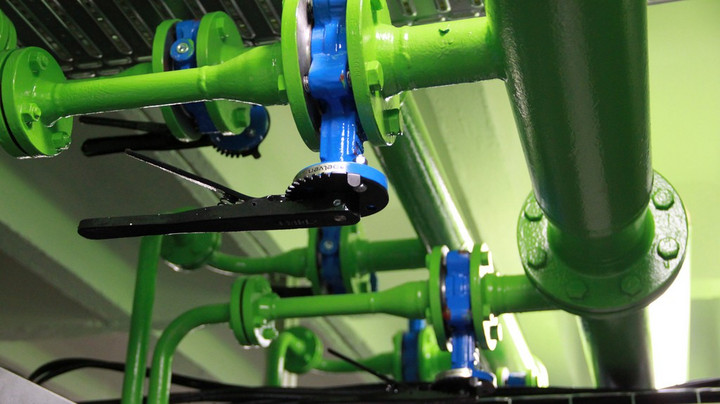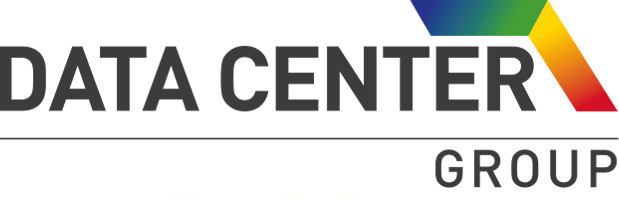The Win-Win Situation of Data Center Energy Efficiency
Reducing power consumption in data centers has multiple benefits for operators and customers. dotmagazine caught up with Marc Wilkens, Senior Consultant at the Data Center Group and Leader of the eco Competence Group Data Center Energy Efficiency, to find out how to achieve this.

Water cooling (Source: Roland Broch)
DOTMAGAZINE: Data centers are often painted as energy sinners. Is this a fair assessment?
MARC WILKENS: Over the last 3 years, the awareness of data center operators concerning energy consumption has increased. More and more datacenter operators have recognized the win-win situation of data center energy efficiency. There are big opportunities in being green and making considerable cost savings.
In 2016, a lot of data centers became interested in local and national energy efficiency standards like the Blue Angel for the energy conscious operation of data centers (RAL-UZ 161). Some data centers are using highly efficient systems like tri-generation – combining electricity, heat and cooling for the data center.
Another important topic at the moment is energy reuse for heating, meaning that data centers can actually provide energy in the form of heat for other business areas like offices or manufacturing.
DOT: Given that IT is essential in practically all areas of business today, how can companies reduce their IT energy consumption and improve their ecological footprint?
WILKENS: The first step is always to do a thorough analysis of the current power requirements of the IT components in the data center and of the associated building engineering (i.e. the uninterruptible power supply, emergency power and cooling system). There is usually huge potential in the procurement and operation of IT hardware (i.e. virtualization and purchasing more energy efficient IT hardware).
The second step is to develop a holistic concept for possible efficiency measures, with an estimation of the potential savings; the changes often pay off in less than three years. As a result, data centers are becoming greener while saving a lot of money at the same time.
DOT: Does it make a big difference whether a company operates their own internal data center, or migrates their IT to the cloud?
WILKENS: From the point of view of power consumption, cloud computing does not offer a notable impact on improving energy efficiency. In the energy balance of cloud computing, often the expense (power, costs, technology, etc.) for data transport (e.g. switches) are not taken into account. The results of the research project Government Green Cloud Lab (TU Berlin, regioIT, dataport, ekom21, ZIT-BB, 2012) demonstrated that data exchange makes up for a considerable proportion of the total energy requirement.
As a result, not every IT service/application is suitable to be operated in the cloud – neither from the perspective of the technology/software/security nor from the perspective of energy efficiency. From the perspective of accessibility and redundancy, however, a private cloud (several DCs from one company at different locations) can still be a sensible approach.
DOT: Are there other things companies should pay attention to in the area of energy efficient IT operation?
WILKENS: Key Performance Indicators (KPI) for data centers are currently being prepared as European and international standards in the context of the norms EN 50600-4 and ISO 30134. These KPIs will play an important role in the operation of data centers in the future – i.e. the PUE as an internal or external benchmark for the energy efficiency of data centers.
The newest developments on the IT hardware market in relation to energy efficiency could also mean big challenges for DC building engineering. In the last two to three years, energy proportionality has improved greatly, especially for servers. The power requirements for IT hardware when idle have reduced significantly, making the power consumption more dependent on the actual working load of the server. In future, the thermal load and the temperature in the white space could vary much more than is currently the case, above all for small and medium-sized data centers. This could have a major impact on the building engineering, especially in the areas of cooling and UPS.
Last but not least, a multiple location strategy is interesting in terms of availability, and can be undertaken in connection with outsourcing (i.e. colocation for a second location). This can lead to investment savings, but the costs incurred for data lines and latency times also need to be taken into consideration.
DOT: How much energy is required to transport data in times of cloud computing and virtualization?
WILKENS: As the results of the GGC-Lab 2012 show, the additional energy requirements for data transport and distribution (above all for the additional servers with distribution algorithms) should not be neglected. Depending on the size of the cloud, the power requirements for this can account for up to 10% of total power requirements. Using intelligent load management – in which applications are always sent to the DC that currently has the best efficiency – offers potential savings of up to 40%, considerably higher than the associated costs.
DOT: What recent or coming innovations in the area of energy efficiency do you find most exciting?
WILKENS: One thing that is not especially new, but still very interesting is the intelligent balance of IT workloads in combination with the facility loads. This is a great chance to combine big potential for data center energy consumption and reliability (e.g. doing load balancing in a multiple location strategy as a kind of private cloud).
In connection with this, things like the new server architectures with so-called microservers (http://m2dc.eu/en/) are very exciting. With these completely novel server concepts, it is possible to achieve a very high density of computing power per square meter of DC space. Such innovative server concepts could in the future result in considerable changes to the design of DC infrastructure.
Researchers have, for the last good two years, again been endeavoring to make the use of IT measurable. The German Federal Office for the Environment is currently funding the research project “KPI4DCE”; a set of around seven indicators are being developed by the TU Berlin together with the Ökoinstitut, which represent not only the data center efficiency, but also the eco-balance of data centers. The indicators are currently being tested for their practicality by the Data Center Group with a range of DC operators.
With his experience in over 70 projects in the area of IT infrastructures (data centers, IT spaces, the print environment, IT work stations, etc.), Marc Wilkens has become an acknowledged expert for the certification and energy efficiency of data centers.
Marc Wilkens has been Senior Consultant at the Datacenter Group since November 2013. There, he leads the Competence Group Energy Efficiency and Certification. Since 2013/14 he has been active in the standardization committee GUK 715.5 “Data Centers” at the DKE. With his involvement, the norms EN 50600 “DC Infrastructure” and ISO 30134 “Information Technology - Key Performance Indicators” are currently being developed. Marc Wilkens has also been a trained auditor for the ISO 27001 (Information Security Management, ISMS) since 2007.
He also works as part of the BITKOM working group “DC & Infrastructure” – here, with a focus on cooling systems. Marc Wilkens is also Lead Auditor assessing “Blue Angel Data Centers” for the TÜV Hessen. In 2015 and 2016 Marc Wilkens was lecturer on the topic Green IT – Blue Angel for DCs at the German Federal Academy for Public Administration. Since the beginning of 2011, he is also Leader of the eco Competence Group Data Center Efficiency.
Please note: The opinions expressed in Industry Insights published by dotmagazine are the author’s own and do not reflect the view of the publisher, eco – Association of the Internet Industry.



